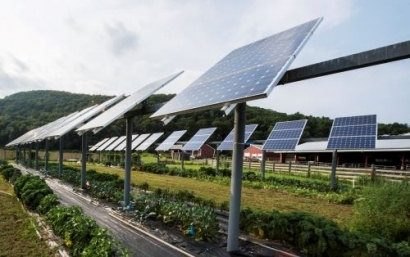
Each industry should consider its impact on nature and make changes in the name of cleanliness and efficiency. Renewable energies have a significant role to play in the future. The good news is, there’s minimal downside to this investment — it’s getting cheaper by the day. Plus, the benefits can be enormous.
Generating Clean Heat
A range of industrial activities require massive amounts of heat to do essential work — including pulp-and-paper, mineral processing, metalwork, agriculture and food processing. The instability of fuel prices, along with calls to divest from fossil fuels, means companies that rely on heat generation have a strong incentive to switch to renewables.
Researchers from the Barbara Hardy Research Institute at the University of South Australia believe they’ve found that alternative. To achieve temperatures as high as 1,292°F in a manufacturing setting, they propose electricity generated from renewable sources to store heat on-demand.
Chambers will contain rocks and phase-change materials that release heat when they change from solid to liquid — or vice versa. Systems like these deliver zero-emission performance, use basic industrial components and require little training for employees to operate successfully.
Powering Manufacturing Enterprises
Solar panels are what most people picture when they think of renewables. This power source has seen an average growth rate of 50% each year for the last decade. The demand for electricity among business locations will only grow over time.
The applications for solar power at industrial locations are almost too numerous to name. One report revealed that electricity accounts for roughly 20% of total energy use in manufacturing. It's used for the production of aluminum, equipment and lighting and cooling.
Manufacturing, fabrication and distribution environments can offload a considerable amount of their energy expenditure to renewable energies. Opportunities include lighting and climate control systems, material heating and cooling processes and chemical and petrochemical refinement systems.
One of the rallying cries right now as the world looks to renewables is to “electrify everything.” It's not merely a reference to tying our homes into solar cooperatives and feeding crowd-sourced clean energy back into municipal grids. It’s also a crucial step forward for every industry.
Major manufacturing apparatuses, even assets like industrial cooling towers, require a constant flow of electrical energy to function, move materials, engage in regular monitoring and testing and much more. Investing in clean, on-site power technologies will go a long way in saving energy and money.
Cutting Expenses for Schools and Nonprofits
The education and nonprofit sectors are industries in their own right — and they have a lot to gain by using renewables to slash operating budgets. Education doesn’t always receive top billing as a political priority. Since every dollar counts — and because clean energy is getting more affordable — renewables are one of the most obvious solutions to tight budgets.
Programs like Grow Solar and Neighborhood Solar seek to connect schools, nonprofits and other community locations with solar panels and wind farm installations to meet electricity and budgetary requirements.
In the case of Grow Solar, sponsored by Missouri Botanical Garden’s EarthWays Center, the program signed contracts with 17 organizations for a total savings of around 168,000 pounds of carbon dioxide. They also saved Missouri organizations from burning around 83,000 pounds of coal in power plants — all since August 2019.
Schools, research institutes, grocery co-ops, charities, credit unions and more can benefit from renewable energy, just like profit-focused businesses. However, they don’t always have the same purchasing power.
Programs like Grow Solar and Neighborhood Solar, which emphasize group-buying opportunities, are vital. Through them, renewable energy companies regularly install solar panels and wind turbines at no cost. Well-chosen sites can feed energy back into the grid. Plus, helping nonprofits implement renewable energy in bulk is a positive step forward.
Looking Forward
Fossil fuels and incumbent energy providers look backward. However, renewable energy is about looking forward. If you need proof that renewables are the future, consider the fact that they’re increasingly instrumental in powering data centers efficiently and affordably.
Beyond solar and wind, there are biomass systems. Biomass isn’t as cost-effective, ubiquitous or mature as solar and wind, but it, too, is an essential part of renewable energy portfolios.
In the right place, such as on farms, lumber mills and other industrial locations where organic waste is part of the job, biomass systems can facilitate the generation of electricity or serve to generate heat, all at a low cost to the operator and planet. Feedstock can include waste from lumber processing, agricultural waste like corn and rice byproducts, manure and other types of farm or municipal solid waste.
Renewable energy has a vast number of applications in industry. As more organizations get on board, the lower costs and added incentives will only become more attractive.

